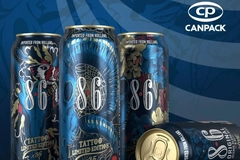Nanotech discovery promises safer food packaging

A UK research institute believes it has identified safe and effective antimicrobial nanoparticles for food packaging, a discovery that could revolutionise how food is packaged in the future. Professors Yulan Ding and Malcolm Povey and PhD candidate Lingling Zhang are confident that nanoparticles of zinc oxide and magnesium oxide have been shown to be effective in killing microorganisms.
A UK research institute believes it has identified safe and effective antimicrobial nanoparticles for food packaging, a discovery that could revolutionise how food is packaged in the future. Professors Yulan Ding and Malcolm Povey and PhD candidate Lingling Zhang are confident that nanoparticles of zinc oxide and magnesium oxide have been shown to be effective in killing microorganisms.This could provide a cheap, safe alternative to nano-sized silver, which has good antimicrobial properties, but is expensive and as a heavy metal, is not suitable for human contact. Nanotechnology involves the study and use of materials at an extremely small scale – at sizes of millionths of a millimetre – and exploit the fact that some materials have different properties at this ultra small scale from those at a larger scale. One nanometer is the same as one millionth of a millimetre. The new nanocomposites developed by Ding and his team are assemblies of functionalised nanoparticles, hundreds of micrometres in size, capable of disintegrating in liquid into nanoparticles that attach to and kill microorganisms. Many scientists believe that such discoveries are pointing the way to what packaging will be like in the future. The Foundation for Scientific and Industrial Research at the Norwegian Institute of Technology (SINTEF) for example is already using nanotechnology to create small particles in the film and improve the transportation of some gases through the plastic film to pump out dirty air such as carbon dioxide. It is hoped that the concept could be used to block out harmful gases that shorten the shelf life of food. SINTEF scientists are looking at whether the film could also provide barrier protection and prevent gases such as oxygen and ethylene from deteriorating food.











